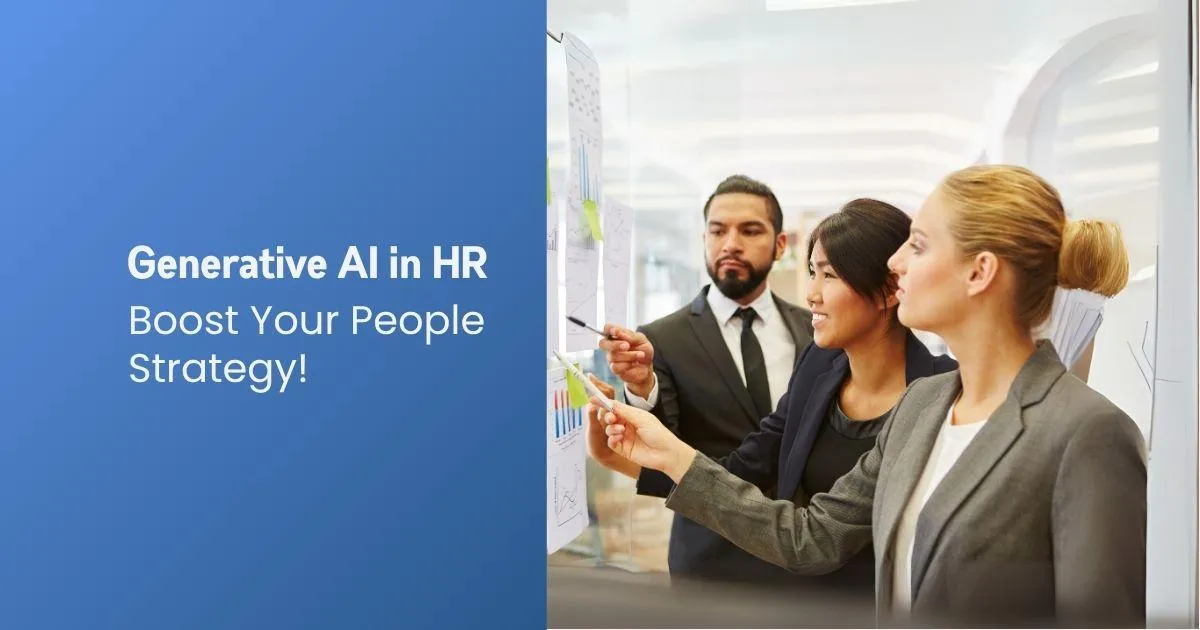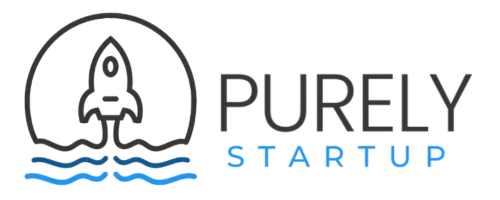
How to Boost Your People Strategy with Generative AI in HR
You started your HR career with a passion for people, a knack for organization, and a commitment to making workplaces better. But as your workload grows, so does all the chaos. Endless emails, back-to-back interviews, tracking employee data, it’s a lot.
You’re doing your best, but deep down, you know you need something smarter to handle the daily grind. That’s where generative AI in HR steps in. It helps you draft job descriptions, sort resumes, respond to tricky employee questions within minutes, and so much more.
With generative AI in HR, you’re not replacing the human side of your work; you’re making space for it. We’ve put together this blog to show you how this tech is slowly becoming every HR pro’s go-to helper and how you can start using it today.
So, let's get into it!
How to Boost Your People Strategy with Generative AI in HR
How Does Generative AI Differ from Other Forms of AI in HR?
How Generative AI Can Be Used in HR Operations (6 Key Areas)
6. Exit Interviews and Surveys
Best Generative AI Tools for HR Professionals (You Must Try)
What is Generative AI?
Generative AI is a type of artificial intelligence that creates new content using machine learning models, especially large language models (LLMs). Unlike regular AI tools that simply search or summarize, generative AI understands context and produces completely new content; text, images, videos, and even code, based on patterns it’s learned from data.
A well-known example is ChatGPT, which can write articles, draft emails, or answer questions like a human. Another is DALL·E, which generates images based on written prompts. These tools don't only repeat what they’ve seen; they create and that’s what makes them powerful.
Generative AI in HR
Now, what does generative AI mean for HR?
In human resources, generative AI refers to using intelligent tools to manage everyday tasks like writing job descriptions, crafting interview questions, screening resumes, and answering employee questions. This technology saves HR teams countless hours of repetitive work and allows them to focus on people.
👉 AI in HR sounds great but is it all upside? Here are 8 pros and cons you need to know first.
For instance, an AI can quickly generate personalized interview questions or develop tailored training materials, all in a fraction of the time it would take manually. This means you can automate and personalize processes from recruitment to employee engagement, more effectively than ever before.
How Does Generative AI Differ from Other Forms of AI in HR?
Artificial Intelligence (AI) is already being used in HR for various tasks. However, generative AI is a newer, more advanced form that goes beyond simple tasks. Below we'll discuss the key differences so you can understand how using generative AI in HR differs from regular AI.

1. Nature of Output
Traditional AI in HR is mostly focused on analyzing data and making predictions. For example, it can tell you which employees might leave soon based on their performance and attendance records. Moreover, it can match resumes to job descriptions by comparing keywords.
Yet, it doesn’t create anything new, it only works with what already exists.
Generative AI, on the other hand, can produce brand-new content. You can give it a prompt like “Write a job description for a marketing manager,” and it will generate a full, polished draft. This makes it useful for tasks that involve writing or creativity, which traditional AI can’t do.
2. Degree of Automation
Traditional AI automates basic, rule-based tasks. It can automatically sort emails, send interview invites, or flag candidates based on certain criteria. This saves time, though the process is still limited to what the system was trained to do using fixed rules.
It doesn’t adapt or change its output in a creative way.
Alternatively, generative AI offers a deeper level of automation. It can perform tasks that previously required human input, like writing personalized onboarding messages, generating employee feedback summaries, or designing custom training plans. Not only does it follow rules, but it also learns from patterns and uses them to generate new material.
3. Interaction with Users
Almost all traditional AI tools in HR are designed for basic interaction. For instance, a chatbot may help employees find out how many leave days they have or how to apply for a refund. The answers are usually taken from a fixed list or a knowledge base.
If a question is uncommon or complex, the bot can’t handle it.
At the same time, generative AI tools are more advanced in communication. They can hold longer conversations, ask clarifying questions, and adjust their tone according to the user. Let's say an employee sounds confused or stressed; the AI can respond more gently. This way, interaction feels more human and helpful.
How Generative AI Can Be Used in HR Operations (6 Key Areas)
Generative AI is a powerful tool, but how exactly can HR teams use it? Here we'll look at some key areas where generative AI fits into human resources.

1. Recruitment and Hiring
Hiring is one of the most hectic tasks in HR, but with generative AI, it becomes a lot easier:
Job Descriptions in Seconds: Instead of drafting posts from scratch, HR can input role requirements into an AI tool, which generates polished, bias-free job descriptions tailored to the company’s tone.
Automated Resume Screening: AI scans hundreds of resumes, ranks candidates based on skills and experience, and shortlists top matches, cutting manual review time.
Interview Assistance: Some AI tools also suggest interview questions based on the candidate’s profile, ensuring more structured and relevant assessments.
👉 Want to hire faster and smarter? Here’s how AI is reshaping HR and how to use it to your advantage.
2. Employee Onboarding
A poor onboarding experience leads to early disengagement. However, generative artificial intelligence tools make sure the transition is smooth and tailored.
Customized Welcome Kits: Whether it’s training timelines or intro emails, generative AI creates role-specific onboarding kits so new hires don’t feel lost on day one.
Interactive Learning: New hires gain access to AI-curated training modules, FAQs, and even simulated scenarios that help them adapt quickly.
Automated Compliance: AI ensures the digital completion of all the paperwork (contracts, tax forms, policies), without HR having to chase employees.
👉 HR headaches? This guide to HR automation shows how to ditch the manual work for good.
3. Performance Reviews
Annual reviews can be vague, biased, and stressful. Generative AI turns that into a more useful and data-driven process.
Automated Feedback Generation: AI analyzes performance metrics, peer feedback, and manager notes to create clear, structured, and unbiased reviews.
Growth Recommendations: Based on performance trends, AI suggests personalized development plans, training, or mentorship opportunities.
Real-Time Insights: By continually analyzing feedback and progress, generative AI helps managers identify potential issues early and support their teams better.
4. Learning and Development
We all learn differently and one-size-fits-all training doesn’t work these days. Generative AI enhances learning and development by personalizing it.
Adaptive Learning Paths: AI assesses skill gaps and recommends the right mix of courses, simulations, or coaching, suited to an employee's role and learning style.
Content Generation: AI transforms dense policy documents into quizzes, short videos, or engaging micro-lessons that people will surely pay attention to.
Progress Tracking: AI monitors course completion rates, quiz scores, and engagement to refine training strategies.
5. Employee Queries
HR teams’ inboxes are filled with repetitive questions from employees. Generative AI-powered chatbots can handle all those queries fast.
Policy & Payroll FAQs: Employees ask about leave balances, benefits, or payroll dates via chatbot and receive instant answers within seconds.
Process Guidance: From submitting a reimbursement to raising an IT ticket, AI guides employees through each process, step by step.
Emotional Insight Alerts: If employees express frustration or confusion, the chatbot can detect this and alert HR to step in. Consider it like digital empathy.
6. Exit Interviews and Surveys
Exit interviews contain valuable insights, but manually analyzing them is a tedious task. AI extracts actionable trends.
Automated Sentiment Analysis: AI scans written feedback from exit interviews to reveal common themes like "lack of growth" or "managerial issues," without HR needing to read each line.
Predictive Analytics: AI identifies patterns in employee behavior and feedback that might signal who’s at risk of leaving and why.
Retention Strategies: Based on trends, generative AI gives HR data-backed recommendations to improve workplace culture and reduce turnover.
Best Generative AI Tools for HR Professionals (You Must Try)
Final Word from Purely Startup
To sum it up, adopting generative AI in HR doesn’t mean sidelining the human touch, it means amplifying it. By using generative AI in recruitment, onboarding, performance reviews, and beyond, you create smoother and more tailored experiences.
Start small, experiment with writing job descriptions, or setting up an AI chatbot for frequently asked questions, and see how it changes your day. Ready to transform your HR operations? Book a free consultation with us below!


